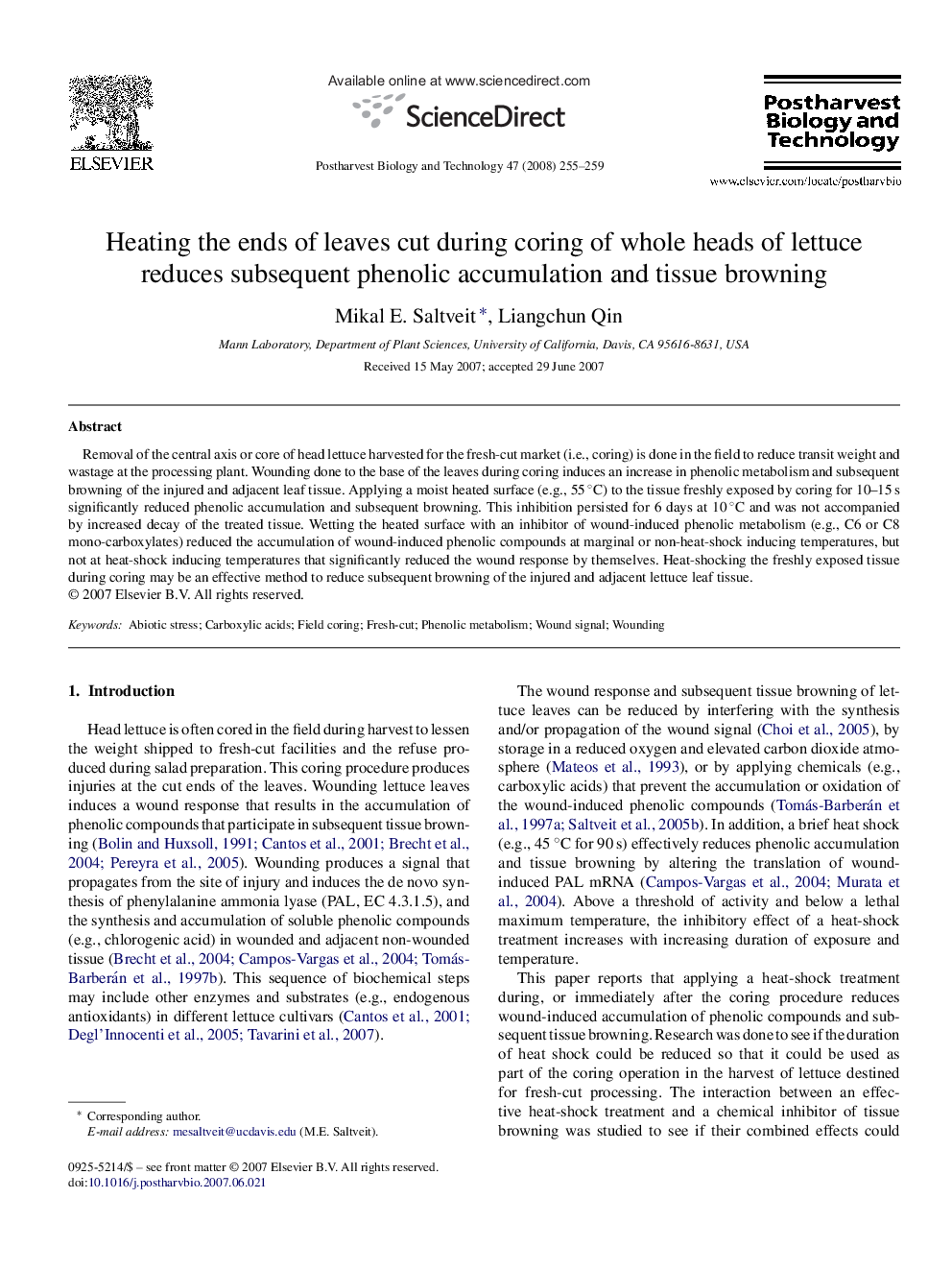| Article ID | Journal | Published Year | Pages | File Type |
|---|---|---|---|---|
| 4519472 | Postharvest Biology and Technology | 2008 | 5 Pages |
Abstract
Removal of the central axis or core of head lettuce harvested for the fresh-cut market (i.e., coring) is done in the field to reduce transit weight and wastage at the processing plant. Wounding done to the base of the leaves during coring induces an increase in phenolic metabolism and subsequent browning of the injured and adjacent leaf tissue. Applying a moist heated surface (e.g., 55 °C) to the tissue freshly exposed by coring for 10-15 s significantly reduced phenolic accumulation and subsequent browning. This inhibition persisted for 6 days at 10 °C and was not accompanied by increased decay of the treated tissue. Wetting the heated surface with an inhibitor of wound-induced phenolic metabolism (e.g., C6 or C8 mono-carboxylates) reduced the accumulation of wound-induced phenolic compounds at marginal or non-heat-shock inducing temperatures, but not at heat-shock inducing temperatures that significantly reduced the wound response by themselves. Heat-shocking the freshly exposed tissue during coring may be an effective method to reduce subsequent browning of the injured and adjacent lettuce leaf tissue.
Related Topics
Life Sciences
Agricultural and Biological Sciences
Agronomy and Crop Science
Authors
Mikal E. Saltveit, Liangchun Qin,
